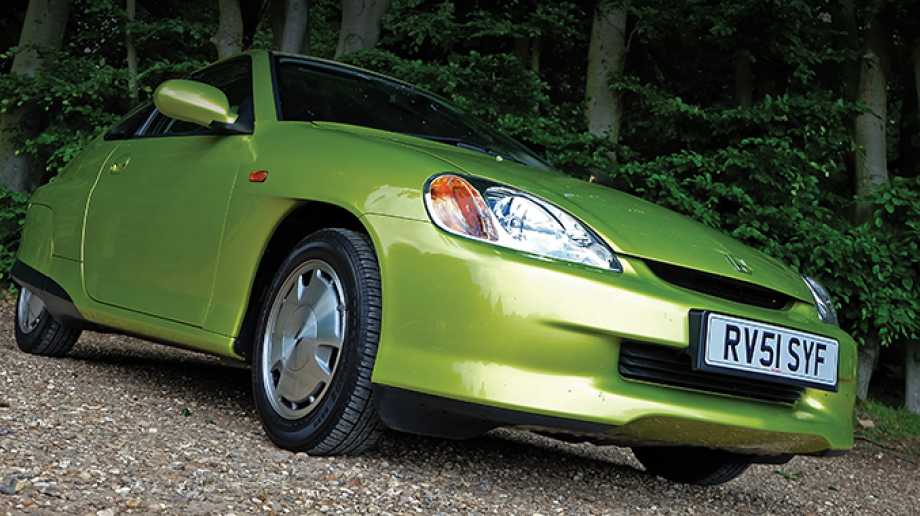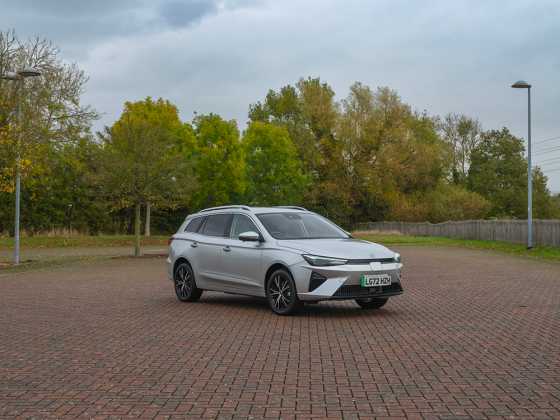Road test: 1999 Honda Insight

With news that a new US version of the hybrid-powered Insight will appear in 2018, Richard Gooding drives the first generation of Honda’s pioneering petrol-electric car
Honda is to re-introduce the hybrid-powered Insight and Integrated Motor Assist (IMA) system to the US market in 2018, the third generation of a petrol-electric car nameplate which was first launched in 1999.
The original two-seat coupé-silhouetted Insight gave way to the second-generation model in 2009 (although production ended in 2006), which featured Toyota Prius-like styling and a five-door body. We take a trip down hybrid memory lane in Honda UK’s pristine first-generation car to remember the original Prius’ only real contemporary rival.
What was it?
The original Honda Insight was the first production car in the Japanese carmaker’s range to use the IMA system, one of the most technologically-advanced parallel hybrid power systems of the time.
Using both the engine and motor to power the car, recuperation of braking energy – the motor acting as a generator to recharge the batteries – maximises energy usage in order to cut emissions and boost fuel economy.
A 995cc, three-cylinder petrol engine provides the motive power, its 67bhp boosted to 73bhp with the assistance of a 13.4bhp/10kW electric motor mounted in-between the engine and transmission. A strict two-seater, behind the driver and passenger is a bank of nickel-metal hydride (Ni-MH) batteries rated at 144V DC.
Under acceleration, the electric motor provides additional power to aid the petrol engine. The engine and the electric motor are permanently connected, so, unlike the original Prius, the electric motor cannot propel the Insight on its own.
But, as the electric motor only assists the VTEC-E petrol engine, it’s smaller and lighter than traction motors in other hybrid vehicles, a key point in the Insight’s make-up.
Lightweight construction and space-age looks reminiscent of the 1983 Honda CR-X ensured the original Insight was almost ahead of its time.
Faired-in rear wheels, a narrower rear track as well as a teardrop silhouette meant the Honda bested Toyota’s impressive Cd 0.29 drag co-efficient figure, the Insight recording a value of just 0.25.
The first production petrol-electric hybrid car sold in the US, the Insight beat the Prius on that front, too: the odd, saloon-styled Toyota arrived a few months later than the hybrid Honda.
How did it drive?
Inside, the garish digital instruments are as space-age as the exterior looks, and the low‑slung driving position as sporty as any other two-seat coupé, which is in effect what the original Honda Insight is.
As with the first‑generation Prius we tested last year, the only thing which really dates the little Honda is the quality of the interior trim plastics – while they may be not up to 2018 standards in feel and look, the layout of the controls means everything falls readily to hand.
In typical hybrid fashion, there’s a split rear window tailgate, but all-round vision is good, despite the super swoopy styling.
As well as its state-of-the-art hybrid powertrain, the Insight was equally pioneering in its construction. Liberal use of light materials and a unit-body/space-frame which used stressed sheet metal panels to absorb and distribute loads as well as extruded frame members resulted a body a whole 40 per cent lighter than a contemporary Honda Civic.
Underneath, chassis resin panels ensured a clean passage of air, with additional fairings around the fuel tank and exhaust system. Everything was honed for utmost efficiency: even the aluminium alloy wheels had a flat, disc-like design.
Out on the road, Honda’s weight‑saving and efficient way of thinking means the 838kg Insight doesn’t feel underpowered, despite its meagre power output. It’s not fast (0 to 62mph takes around 12.0 seconds), thanks to its long, eco‑minded gearing.
But, the low driving position and light weight means the Insight feels faster than it is, and its power‑assisted steering offers enough feedback to let you know what the front wheels are doing.
Grip from the 165/65 R 14 low rolling‑resistance tyres is good, and the dinky Honda changes direction well, no doubt a result of that lightweight, almost obsessive attention to detail.
Unlike the original Prius, the Insight has a five-speed manual, and although the shift action isn’t the slickest, it helps the Honda hybrid feel more like a ‘normal’ car, most probably a good thing back in 1999.
When in neutral, the engine is shut off, just like most contemporary cars of 2018, restarting when first gear is selected. The ride is a strange mix of both firm and soft, the two-seater feeling soft when cornering and more hard-riding when the road surface turns a little less smooth.
Despite its avantgarde dieting construction methods, the Insight was very fully equipped as standard. Central locking with keyless entry, electric windows, reading lights, and sporty (and very brightly-trimmed on Honda UK’s 60,000-mile car) bucket seats all helped justify the Honda’s on the high side price.
Air-conditioning was standard in some markets, too, and a raft of eco-minded displays include an economy shift indicator as well as a fuel mileage computer, which can be toggled between fuel economy, either a ‘lifetime’ or instantaneous 0 to 150mpg readings.
Fuel level, battery charge and the IMA’s ‘Charge’ and ‘Assist’ indicators reveal whether the system was being recharged or being used to send energy to the electric motor, much like the more sophisticated displays in electric vehicles and hybrids today.
How economical was it?
The official and claimed fuel economy of the original Honda Insight is still a value most drivers would dream of today. Way back in 1999, a combined cycle return of 83.1mpg was some way ahead of the 57.6mpg of the original Toyota Prius.
As were the emissions. While the hybrid Toyota emitted 114g/km, the little 80g/km Honda was a whole 34g/km cleaner. While few drivers would see the claimed economy figure (around 60mpg was nearer the mark for most), around 700 miles was theoretically possible from the Japanese hybrid.
What did it cost?
Just like the original Prius, Honda’s hybrid trailblazer didn’t come cheap. At £15,490, it was a little cheaper than its Toyota classmate, but, like the Prius, the Insight cost more than its conventionally-engined and more practical small hatchback rivals.
With fewer seats and therefore less usable space, the price was quite a big ask at the turn of the millennium. But again, just like the Prius, the hybrid technology that both were pioneering was in its infancy, and the prices reflected this.
But, the Honda was the cheapest hybrid car on the market.
If the rakish and dinky Honda appeals today, you’ll need considerably less than that original £15,490. Cars can be picked up from around £1,750 and top out at around £4,000, but, again, as with the first-generation Prius, locating one could be problematic.
Rarer in the UK than the 1,200-unit Toyota, only around 250 original Insights found their way here, so you might have to comb the classifieds very thoroughly.
Major issues are thankfully rare, though: the battery pack can be expected to be past its best after 17 years, and the aluminium body panels may make accident repairs costly.
Why did my fleet need one?
With the low-carbon market very much in its burgeoning stages of development, the Insight arrived as a breath of fresh air against its – admittedly limited – competition.
Its swoopy, stand-out looks and digital dashboard seemed to have arrived from another planet, its alien green-like colour (actually called ‘Citrus Yellow’) only adding to that ‘out of this world’ feel.
Which also summed up its new assisted motor technology, which not only made it green in every sense of the word, but very clean, too.
In fact, so ‘clean’ was the Insight, it was the only car to fall into the new VED Band A (up to 100g/km) tax grouping at the time of the banding’s introduction in 2005.
Perhaps surprisingly, the Honda held onto that honour until 2008, when numerous car makers began to introduce low-carbon models that also benefited from the new VED-free status.
EV PLUS: HONDA'S ELECTRIC EXPERIMENT

While Honda may not have a pure battery electric car in its current line-up, it experimented with a full EV in 1997.
The EV Plus was a conventionally-styled hatchback, leased to 400 drivers in the US for $455 a month.
The $53,900 cars were taken back in 1999 and scrapped, but with technology such as an Ni-MH battery pack, regenerative braking and an electrically-heated windscreen, it introduced many of the features which would later appear on the original Insight.
Its 49kW electric motor gave around 100 miles of range.
Honda’s J-VX concept of 1997 previewed the look of the first‑generation Insight, as well as its IMA system. The production Insight arrived two years later.









